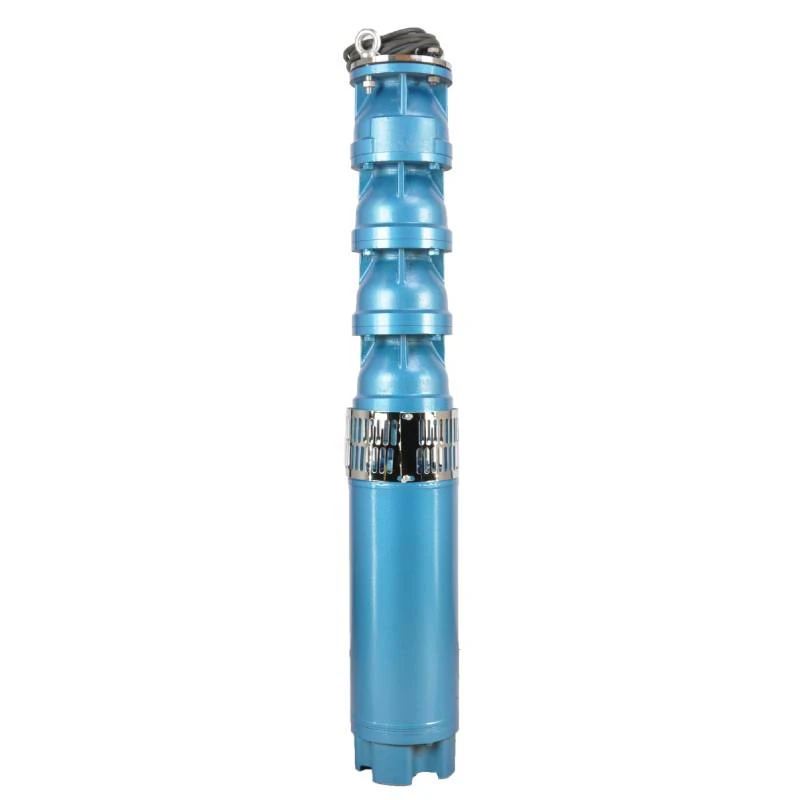Nov . 29, 2024 11:02 Back to list
Submersible Pump Motor Solutions for Efficient Fluid Transfer and Water Management
Submersible Motor Pumps An Essential Solution for Fluid Management
Submersible motor pumps have become a crucial tool in various industries and applications, owing to their unique design and functionality. Unlike conventional pumps, submersible pumps operate while submerged in the fluid they are intended to pump. This design allows for greater efficiency and mobility, making them ideal for a wide range of tasks, particularly in water management, agriculture, construction, and even sewage treatment.
How Submersible Motor Pumps Work
The operation of a submersible motor pump is relatively straightforward, yet highly effective. The pump is sealed in a waterproof housing, which allows the motor to be submerged without the risk of electrical failure. When activated, the motor drives an impeller that moves the fluid through the pump and out through the discharge pipe. This process not only allows the pump to lift fluids from significant depths but also minimizes cavitation – a common issue in traditional pumps that can lead to reduced efficiency and wear.
Submersible pumps can be categorized into two main types drainage pumps and sewage pumps. Drainage pumps are typically used for removing water from flooded basements or construction sites, while sewage pumps handle waste fluids containing solids, making them essential for municipal waste treatment. The versatility of submersible pumps means they can handle various fluids, ranging from clean water to viscous sludge.
Advantages of Submersible Motor Pumps
One of the significant benefits of submersible motor pumps is their space-saving design
. Since they are installed underwater, they take up minimal surface area, freeing valuable space for other operations. Additionally, their noise levels are significantly lower than traditional pumps, as the surrounding water dampens sound, making them more suitable for residential and sensitive environments.submersible motor pump

Moreover, submersible pumps often require less maintenance than their surface counterparts. With fewer moving parts exposed to environmental elements, there is a reduced risk of wear and tear. This durability translates to a longer lifespan and lower operational costs, making them a cost-effective choice in the long run.
Another essential advantage is their ability to operate in challenging conditions. Whether in deep wells, flooded sites, or remote locations, submersible motor pumps can function where other pumps might fail. Their robust construction and ability to handle various fluid types make them versatile tools in fields such as mining and agriculture, where they are often used for irrigation or dewatering applications.
Applications of Submersible Motor Pumps
The applications for submersible motor pumps are extensive. In agricultural settings, they are commonly used for irrigation purposes, enabling farmers to efficiently distribute water across large fields. In residential areas, they play a vital role in home drainage systems, helping to pump water away from foundations and protect properties from flooding.
In the construction industry, these pumps are often essential for dewatering sites, ensuring that workers can operate in dry, safe conditions. Furthermore, in municipal waste management, sewage submersible pumps are crucial for transporting waste fluids to treatment facilities, ensuring public health and environmental protection.
Conclusion
Submersible motor pumps are a significant advancement in fluid management, offering numerous benefits in various applications. Their efficiency, durability, and versatility make them indispensable tools in industries ranging from agriculture to civil engineering. As technology continues to evolve, we can expect these pumps to become even more efficient and environmentally friendly, solidifying their position as an essential component in our fluid management systems. Whether you are in need of a solution for industrial, agricultural, or municipal applications, submersible motor pumps present a reliable and effective option to meet your fluid transfer requirements.
-
Submersible Water Pump: The Efficient 'Power Pioneer' of the Underwater World
NewsJul.01,2025
-
Submersible Pond Pump: The Hidden Guardian of Water Landscape Ecology
NewsJul.01,2025
-
Stainless Well Pump: A Reliable and Durable Pumping Main Force
NewsJul.01,2025
-
Stainless Steel Submersible Pump: An Efficient and Versatile Tool for Underwater Operations
NewsJul.01,2025
-
Deep Well Submersible Pump: An Efficient 'Sucker' of Groundwater Sources
NewsJul.01,2025
-
Deep Water Well Pump: An Efficient 'Sucker' of Groundwater Sources
NewsJul.01,2025
-
 Submersible Water Pump: The Efficient 'Power Pioneer' of the Underwater WorldIn the field of hydraulic equipment, the Submersible Water Pump has become the core equipment for underwater operations and water resource transportation due to its unique design and excellent performance.Detail
Submersible Water Pump: The Efficient 'Power Pioneer' of the Underwater WorldIn the field of hydraulic equipment, the Submersible Water Pump has become the core equipment for underwater operations and water resource transportation due to its unique design and excellent performance.Detail -
 Submersible Pond Pump: The Hidden Guardian of Water Landscape EcologyIn courtyard landscapes, ecological ponds, and even small-scale water conservancy projects, there is a silent yet indispensable equipment - the Submersible Pond Pump.Detail
Submersible Pond Pump: The Hidden Guardian of Water Landscape EcologyIn courtyard landscapes, ecological ponds, and even small-scale water conservancy projects, there is a silent yet indispensable equipment - the Submersible Pond Pump.Detail -
 Stainless Well Pump: A Reliable and Durable Pumping Main ForceIn the field of water resource transportation, Stainless Well Pump has become the core equipment for various pumping scenarios with its excellent performance and reliable quality.Detail
Stainless Well Pump: A Reliable and Durable Pumping Main ForceIn the field of water resource transportation, Stainless Well Pump has become the core equipment for various pumping scenarios with its excellent performance and reliable quality.Detail
